|
|
 |
|
|
|
|
|
|
| |
|
Dr
W D Allen |
| carried
out the original
theoretical work on
wave-guides for use in
radar systems. |
|
| |
|
W
G Allen |
|
joined the Directorate of Communications
Development (DCD) in London in May 1940 which was the Headquarters organisation that dealt with radar work for the
RAF.
|
|
| |
| Reuben
Aspinall CBE |
 |
started
work at Worth Matravers
in July 1940 on metric
Air to Surface Vessel
radar (ASV). Later
he spent time
in the US working on Mk III IFF radar (Indication Friend or Foe) in Vivian Bowden's team. |
|
| |
| Jimmy
Atkinson |
|
graduated from Cambridge, joining the Bawdsey Research Station in
May 1939. He worked on cathode ray tubes with long
afterglow properties, and later on short wavelength radar
systems.
|
|
| |
|
|
|
|
|
|
|
| |
| Prof
George Bacon |
 |
arrived
at Worth Matravers from
Cambridge in May 1940
and, with Banwell,
developed the Variable
Elevation Beam (VEB)
heightfinding system at
a 1.5 metre wavelength. |
|
| |
| Arthur
'Arlie' Bailey |
| started
work on radar at the Air
Defence Experimental
Establishment (ADEE) in
Christchurch for the
Army, later moving to
Pale Manor Farm in
Malvern. |
|
| |
|
Reg Batt |
| started work on centimetric radar shortly before the revolutionary cavity magnetron arrived. He became the first moving target for these radars when he strapped an aluminium sheet to his bicycle! After retiring he wrote ‘Radar Army’ and became secretary to the Purbeck Radar Museum Trust. |
|
| |
|
|
| |
|
Fl
Lt Harry Bisby |
| joined the
establishment at Worth Matravers
in July 1940. He worked on Chain Home Low
(CHL) and Ground Control of Interception (GCI). |
|
| |
| W
T Blackband |
 |
Blackband
was an expert on aerial
design for longer
wavelengths. |
|
| |
| Alan
Blumlein |
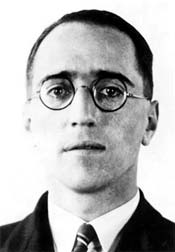 |
Inventor
of stereo before the
war.
Tragically died when a Halifax
bomber crashed near Goodrich
in 1942 while testing
the prototype H2S
airborne radar. |
|
| |
|
|
|
|
|
|
|
|
|
| |
|
Brian
Callick |
| joined
the Royal Aircraft
Establishment in 1937.
In 1940 he moved to
Worth to work on
electronic
countermeasures to fool
the enemy radar systems. |
|
| |
|
|
| |
| Rex Cary MBE |
 |
worked
on the design and
installation of aerials
for Chain Home stations
(and possible Chain Home
Low). |
|
| |
|
|
| |
| Sir Robert ‘Bob’ Cockburn |
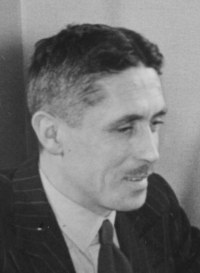 |
came to Worth in 1940 and worked to counter German radio navigation for their bombers. He went on to spearhead radar counter-measures for the D-Day invasion. He later held various senior positions in the scientific civil service. |
|
| |
|
|
| |
| Sir John
Cockcroft, |
 |
at Cambridge before the war, pioneered the use of high energy protons to split the atom. In 1939 he built a Coastal Defence radar to detect ships which became the basis of CHL radars. Later he was Director AERE Harwell and received a Nobel prize for physics. |
|
| |
|
|
| |
| John
"Cat's Eyes" Cunningham |
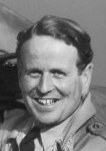 |
became a renowned pilot in
both peace and war - the first to fly a jet airliner, and the first to perform
radar interceptions at night. His "Cat's Eyes" were the Airborne
Interception radar used
to home in on enemy
planes in poor
visibility. |
|
| |
| Lady
Joan Curran |
 |
was
responsible for trials
of a radar decoy called
'window' which comprised
strips of aluminium foil
dropped from aircraft in
bundles. |
|
| |
| Sir Sam Curran FRS |
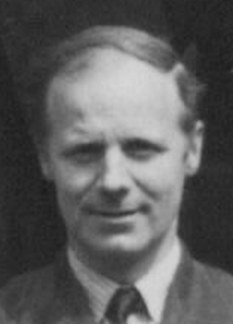 |
joined the centimetric radar team and developed the spark gap modulator for the cavity
magnetron. He later went
to the US to work on the
atom bomb returning to academic work
after the war becoming Principal of Strathclyde University. |
|
| |
|
|
|
|
|
|
|
| |
| Prof Philip I Dee FRS |
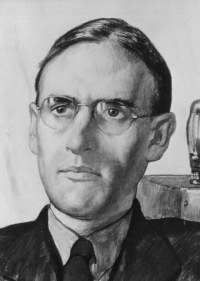 |
came from Cambridge in 1940 and subsequently became joint leader of centimetric radar. He later took charge of centi-metric airborne projects including AI and H2S. After the war he pioneered particle physics at Glasgow University. |
|
| |
|
|
| |
| R
J ‘Bob’ Dippy |
 |
started on radar at Bawdsey in 1936. His ideas for radio navigation, while not used initially, were developed urgently in 1940 as ‘Gee’ to improve bombing accuracy. Gee also helped bombers return home safely, later evolving to become Loran-A. |
|
| |
|
|
| |
|
|
| |
| John
Duckworth |
| came
to Worth from Oxford
with a degree in
physics. He worked on
ground radar and war-time merchant ship radar.
After the war he went on
to nuclear research. |
|
| |
| Geoffrey Dummer MBE |
 |
developed the Plan Position Indicator: the classic scanning radar display. Around 1950 he was first to propose putting multiple transistors on a single semiconductor chip - the very start of the microchip revolution (initially not funded in the UK!). |
|
| |
|
|
|
|
|
|
|
| |
| Prof
John
Farvis |
 |
worked
in radio countermeasures
to counter 'knickebein'
the German navigation
aid for bombers.
He played a significant
part in planning
electronic
countermeasures for the
D-Day landings. |
|
| |
| Sir
Edward 'Ned' Fennessy |
 |
joined the
radar team at Bawdsey in 1935,
moving into the RAF in 1940.
He helped to plan the
installation and
maintenance of ground
radar in No 60 Group.
After the war he moved
into industry holding
many senior positions
including MD British
Telecom. |
|
| |
|
|
| |
| Doug
Fisher FRPS |
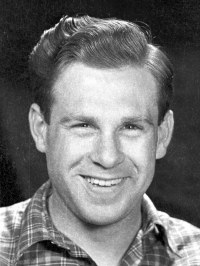 |
started
at Worth in 1940
providing photographs
and film for training
purposes. He also took
portrait photographs of
his colleagues at the
establishment. After the
war he extended his
collection of wartime
photos which were later
digitised to become the
'Fisher Archives'. |
|
| |
|
|
| |
|
|
|
|
|
|
|
| |
| Raye
Gough |
 |
grew
up in Swanage and took a
job at the establishment
to work in the
library. She later
moved to the
photographic group. |
|
| |
|
|
| |
| Ian
Goult |
| joined
the radar team in
Purbeck, working on
radio navigation and
subsequently on radar
trainers. |
|
| |
|
|
|
|
|
|
|
| |
| Peter
Hall |
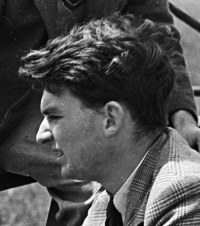 |
started
at Worth Matravers in July
1940. He worked on CHL and
GCI radars subsequently moving to countermeasures. He
later held senior
appointments in the
computer industry. |
|
| |
| Prof Robert Hanbury-Brown FRS |
 |
started working on Chain Home in 1936. He moved on to airborne radar where his ideas made significant improvements in air to surface radars. He later innovated ground breaking ideas in radio astronomy and quantum optics. |
|
| |
|
|
| |
| Geoffrey
Hensby |
 |
worked on airborne
radar. He died
tragically in 1942 when
a Halifax crashed at
Goodrich while testing H2S airborne
radar. |
|
| |
| Antony
Hewish FRS, Nobel Prize |
| a
scientist from Cambridge
University. From
1943 he worked on radio
countermeasures at RAE
Farnborough and TRE
Malvern. After the war
he returned to Cambridge
University where he
became a professor of
radio astronomy. |
|
| |
|
|
| |
| Dr
Stanley Hey FRS |
 |
worked
for the Army Operational
Research Group. In 1942
Hey determined that
reports of possible
jamming to radars were
actually caused by
signals from the sun. |
|
| |
Prof Sir Alan Hodgkin OM KBE
FRS
Nobel Prize |
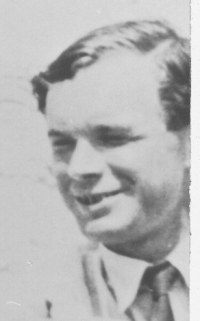 |
worked on airborne radars and guided weapons during the war. He returned to Cambridge to continue research on the nervous system - for this he was awarded a Nobel Prize. He became President of the Royal Society. |
|
| |
| Ken
Hopkinson |
| was
the main designer of the
Ground Control of
Interception (GCI)
display arrangements. |
|
| |
| Sir
Leonard
Huxley |
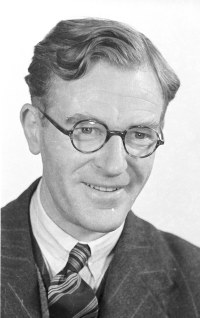 |
pioneered
operational research
when he advised Fighter
Command on the operation
of the Chain Home
stations during the
Battle of Britain.
He later helped set up
and run the radar
training school for
operators and
maintenance personnel. |
|
| |
|
|
|
|
|
|
|
|
|
| |
|
|
| |
| Jimmy
James |
 |
worked
on Chain Home Low and
other ground radars. |
|
| |
| Sidney
Jefferson |
 |
joined
the radar team at
Bawdsey in 1936. He
designed the receivers
for the Chain Home
stations and later was
responsible for the
teams working on
receivers, transmitters
and test equipment. |
|
| |
| Johnny
Johnson |
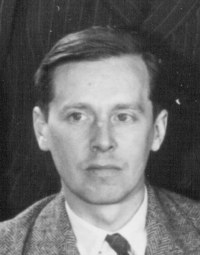 |
joined
the RDF (radar) research
team Bawdsey Research
Station in June 1939 and
worked on navigational
aids incluging GEE. |
|
| |
|
|
| |
| Francis
E 'FE' Jones |
 |
helped
develop the OBOE blind
bombing navigation
system. After the
war he worked on
infra-red detectors
later moving to RAE
where he became deputy
director. He
subsequently move to
Mullards, eventually
becoming managing
director. |
|
| |
| Prof
RV Jones CB CBE FRS |
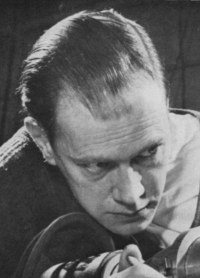 |
worked
in Scientific &
Technical Intelligence.
He helped to counter ‘Knickebein’
(a German bomber
navigation aid) and to
plan ‘Window’
deployment (a radar
decoy). He wrote ‘Most
Secret War’ which
became a TV documentary. |
|
| |
| Sir
John Kendrew CBE FRS
Nobel Prize |
| moved
to Worth Matravers in
May 1940 working on Airborne
Interception (AI)
and Air to Surface
Vessel (ASV) radars. He
was awarded the Nobel
Prize for Chemistry in
1962 |
|
| |
| Prof
Bernhard B Kinsey |
| was
one of the scientists
from Cambridge
University who was to be
directed to work on
radar should war break
out. |
|
|
|
|
|
|
|
|
|
|
| |
| Roland
Lees CB |
 |
worked
on Chain Home Low
including common aerial
working - later moving
to guided weapons.
Towards the end of his
career he was director
SRDE in Christchurch and
RSRE in Malvern. |
|
| |
| Ronald
Lees (Pilot Officer) |
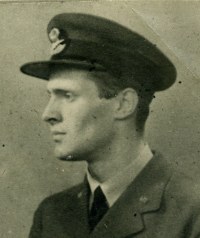 |
completed
his science degree at
Cambridge early in the
war. He then
became a pilot with the
RAF and moved to Worth
working in Post Design
Services. He died
of bronchial pneumonia
in August 1944 |
|
| |
| Wilfred Bennett ‘WB’ Lewis CBE FRS |
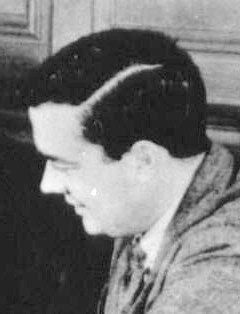 |
went to Bawdsey before the war to help manage the radar research. He spear-headed centimetric radar work ‘under wraps’ against HQ orders. He was briefly director of TRE going to Canada in 1946 to lead the Canadian nuclear power programme. |
|
| |
|
|
| |
|
Arthur Llewelyn OBE |
| worked
on Airborne Interception
(AI) and the Automatic
Gun Laying Turret (AGLT).
He was later a
scientific advisor to
the government and in
1967 became the first
director of the Computer
Aided Design Centre near
Cambridge. |
|
| |
|
Prof Sir Bernard Lovell OBE FRS |
 |
worked on airborne radar developing H2S navigation and Air to Surface Vessel radars. He returned to Manchester University becoming a founding father of radio astronomy - setting up the Joddrell Bank radio telescope. |
|
| |
|
|
|
|
|
|
|
| |
| Sir George
Macfarlane |
 |
started on radar in Dundee. In the Maths Group, he modelled radio propagation to improve radar performance. After the war he continued in government eventually becoming head of the Scientific Civil Service. |
|
| |
| John
H Mills |
 |
worked
on radio
countermeasures. After
the war he remained in
government service later
becoming director of
SRDE in Christchurch. |
|
| |
|
|
|
|
| |
| Prof
Sir Charles Oatley FRS |
 |
was
educated at Cambridge
and in the war worked on
radar for the Army at
ADRDE in Christchurch.
After the war he went to
Cambridge where his work
led directly to the
first commercial
scanning electronic
microscope. |
|
| |
|
|
|
|
|
|
|
| |
| Dr
W H ‘Bill’ Penley CB CBE |
 |
started at Dundee in 1940 working on ground radar including CHL and for GCI. He stayed in the Scientific Civil Service becoming its head in 1975. He moved to Swanage, and after retiring founded the Purbeck Radar Museum Trust with Tony Viney. |
|
| |
| Dr John
M M Pinkerton |
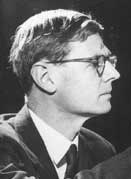 |
arrived at Worth in 1940 and developed test equipment especially for aerials. He returned to Cambridge after the war for a PhD. From 1949 he led development of LEO1 at Joe Lyons & Co - one of the first business computer systems. |
|
| |
| Sq
Ldr 'Len'
Pittendrigh |
| was
enlisted into the RAF
Volunteer Reserve at the
beginning of the
war. During the
course of the war he was
Commanding Officer at
various radar stations
around the country
including St Aldhelm's
Head. |
|
| |
|
|
|
|
| |
| Don
Preist |
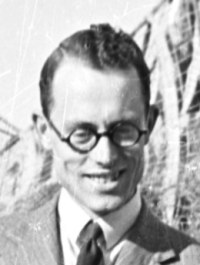 |
joined
the radar team at
Bawdsey in 1936
contributing many
pioneering
developments. In
February 1942 he had a
part in the daring Bruneval
commando raid to capture
German radar equipment.. |
|
| |
| Prof
Sir John
W S Pringle FRS |
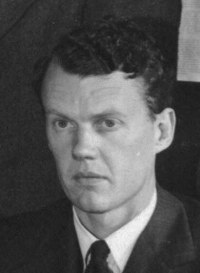 |
came from Cambridge to work on centimetric airborne radar. His experience as a skilled glider pilot gave him a valuable feel for what could be achieved in the air. He was part of the team that planned electronic countermeasures for the D-Day landings. |
|
| |
|
|
|
|
|
|
|
|
|
| |
| Sir
John Randall FRS |
| working
at Birmingham
University, is credited
with inventing the
cavity magnetron with
Harry Boot. |
|
| |
| Jack Ratcliffe CB CBE FRS |
 |
came from Cambridge & managed
development of CHL radars. He subsequently set up radar training at Forres (Swanage). After the war he led the radio group back at Cambridge later becoming director of radio & space research at Slough (part of NPL). |
|
| |
|
|
| |
| Alec
Harley Reeves CBE |
 |
invented Pulse Code Modulation before the war - key to the digital revolution and now used worldwide. During the war he invented OBOE - a radio precision bombing aid. He went on to pioneer fibre optic links in the 1960s. |
|
| |
|
|
|
|
| |
|
|
| |
| Dr
A P ‘Jimmy’ Rowe CBE |
 |
started the radar work by raising concern about Britain’s air defences. He was director of the radar research & development at Worth Matravers and vice chancellor at Adelaide University after the war. His huge contribution has often been overlooked. |
|
| |
| Prof Sir Martin Ryle
FRS Nobel Prize |
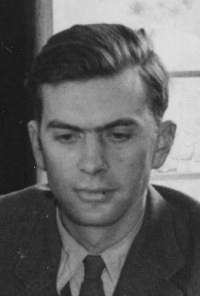 |
worked on electronic countermeasures and helped plan the D-Day spoof attack. He later went to Cambridge becoming a founding father of radio astronomy. He received a Nobel prize for his work and also became Astronomer Royal. |
|
| |
|
|
|
|
|
|
|
|
|
| |
| Joshua
Sieger |
| was
in charge of engineering
(design & workshops)
during the war, and set
up the Radio Production
Unit. After the
war he developed a gas
detector. |
|
| |
|
|
| |
| Prof Herbert Skinner FRS |
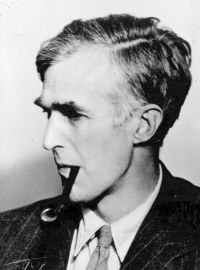 |
was founder leader of the centimetric radar team. He assembled crystal diodes for radar detectors by hand using his glass blowing skills to encase them. After the war he went to AERE Harwell and later to Liverpool University. |
|
| |
| Robert
Allan 'RA' / 'Robin' Smith |
 |
initially
worked on aerial systems
for Chain Home. He
later had a major role
in planning the D-Day
invasion strategy.
At the end of the war he
was appointed head of
the newly created
physics department at
TRE. |
|
|
|
|
|
|
|
| |
|
Harry Spencer |
| an
expert at morse code,
was recruited by MI5
before the war to
impersonate German
spies! He worked
on radar countermeasures
at Worth and on H2S at
Leeson. He retired
to Purbeck and his
bequest to the Radar
Trust initiated
development of this
website & funded
other publications! |
|
| |
|
|
| |
|
|
| |
|
|
|
|
|
|
|
|
|
| |
| Sir Henry Tizard |
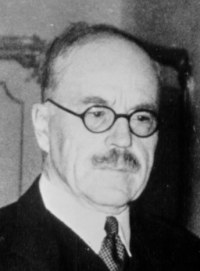 |
was a pilot during World War I. In 1935 he chaired the Tizard committee which initiated British radar development. He pioneered work on ways to intercept aircraft, showing remarkable foresight by starting AI radar development. This proved crucial for the night battle. |
|
| |
|
|
|
|
|
|
|
|
|
|
| |
| Donald
Watson |
 |
was the personal assistant to Dr W B Lewis throughout the war. |
|
| |
| Sir Robert Watson-Watt |
 |
was asked in 1934 if a radio ‘death ray’ was possible. He reported to the Tizard Committee that radio might detect aircraft. He went on to lead the early radar development, moving to London to manage setting up of the Chain Home radar stations. |
|
| |
| Rennie
Whitehead |
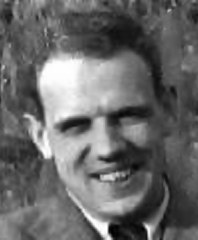 |
joined
Bawdsey in 1939
ultimately succeeding FC
Williams and BV Bowden
as head of IFF. He later
left Physics Department
for Canada as prof at
McGill eventually
becoming Science Advisor
to the Federal Cabinet. |
|
| |
| Prof
Sir Maurice Wilkes FRS |
| was
a researcher at the
Cavendish Labs. before
the war. He was
posted to ADEE, the Army
radar establishment in
Christchurch and then to
Malvern where he worked
on Oboe. After the
war he returned to
Cambridge becoming a
computer pioneer. |
|
| |
|
|
| |
| Arnold ‘Skip’ Wilkins |
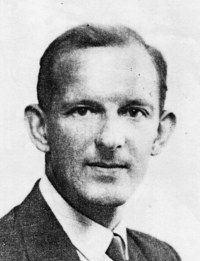 |
calculated in
1935 that, while a radio ‘death ray’ would not then work, aircraft may be detected by reflections. He worked at Orfordness and Bawdsey, moving to London to help manage development of the Chain Home system. |
|
| |
| Prof
Sir Freddie ‘FC’
Williams |
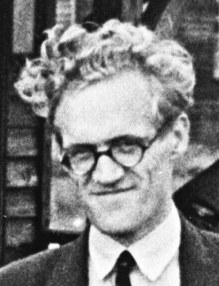 |
an electronic circuits expert, invented new designs using valves in unconventional ways. He led IFF development and worked on AI radars. After the war he pioneered digital computer technology at Manchester University. |
|
| |
|
|
| |
|
|
| |
|
|
|
|
|
|
|
|
|
|
|
|
|
|
|
|